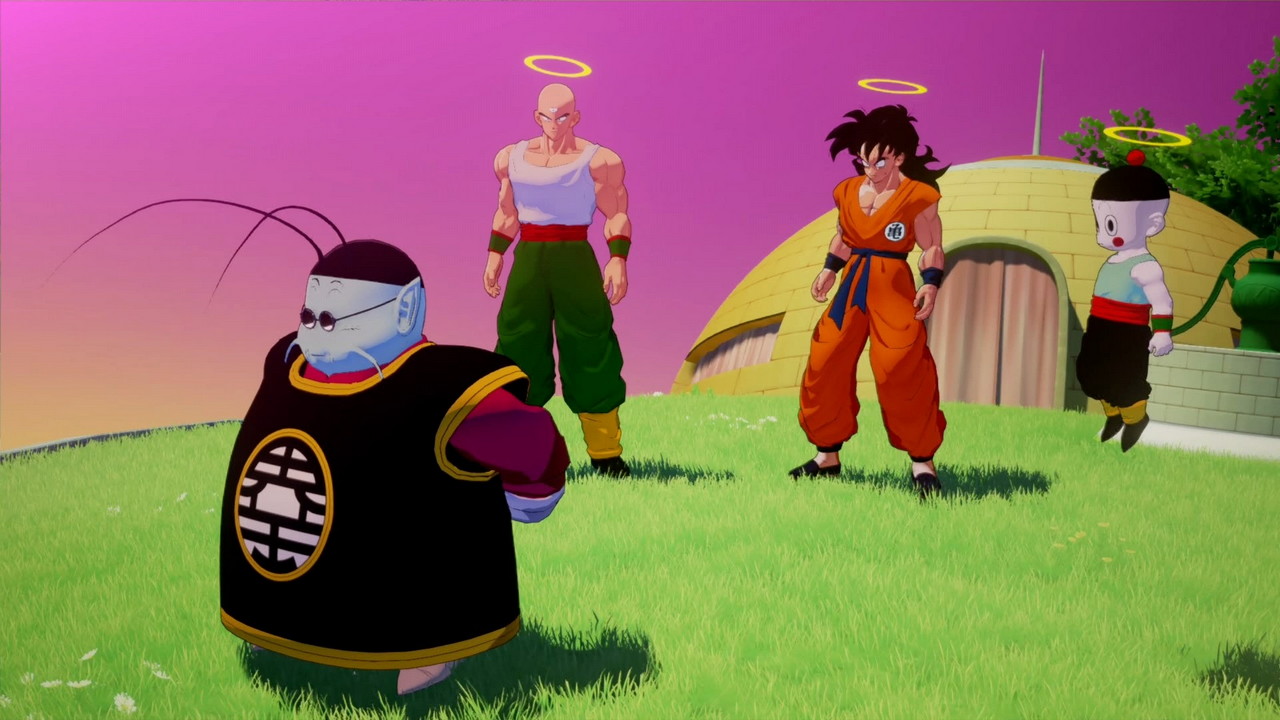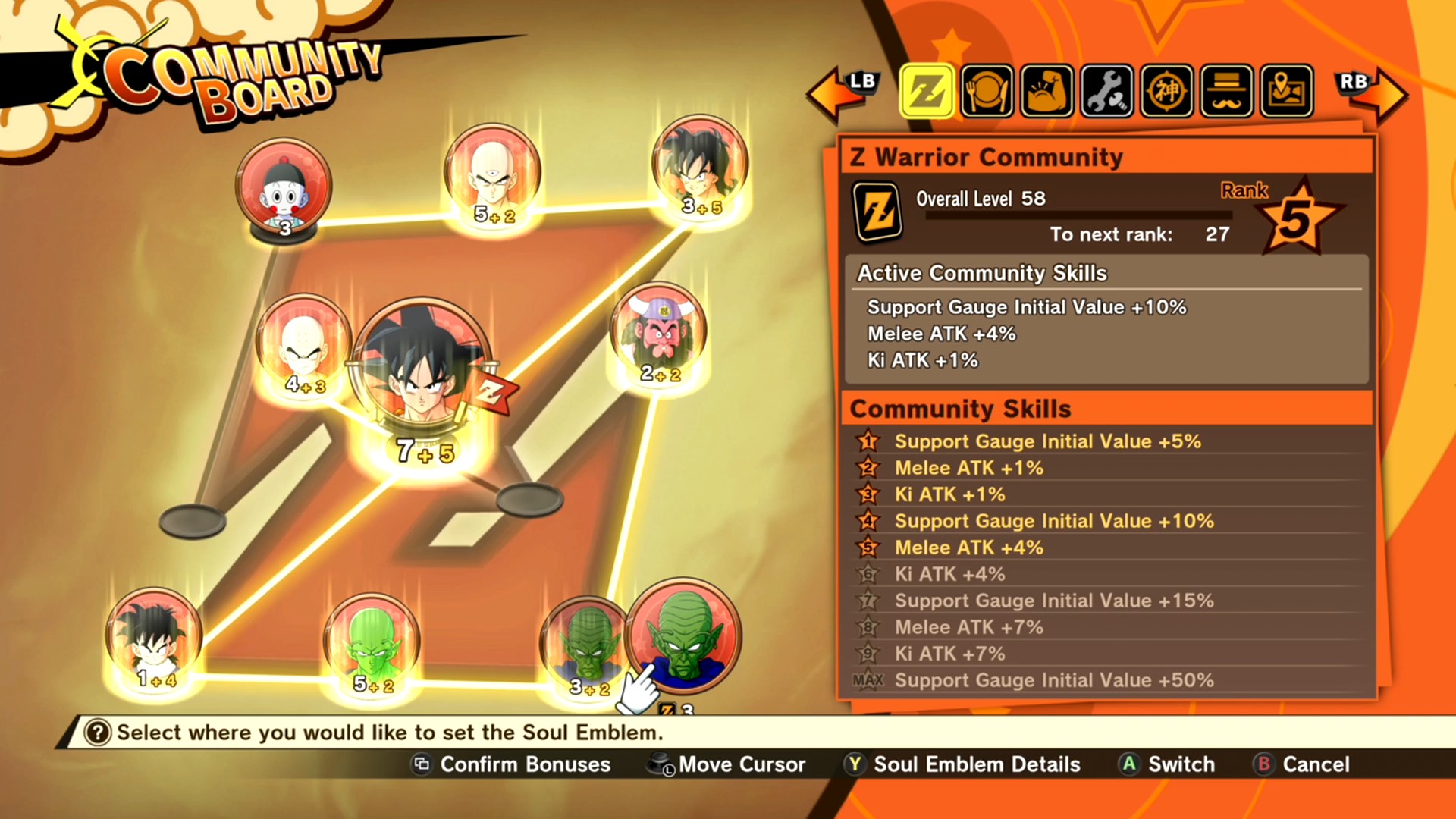Dragon Ball Z has a fond place in the hearts of many who were growing up in the late 1990s-early 2000s. Millions of kids tuned into Toonami and got their first dose of anime watching Goku and the gang. I remember the almost unbearable year-long gap between the Frieza Saga and Android Saga when my friends and I combed Geocities fansites on dial-up desperate to find out what happens next.
So, a game capturing the story of Dragon Ball Z seems like a no-brainer. Well, Dragon Ball Z: Kakarot isn’t the first time the series has received a video game retelling, but it is the most complete. Unlike the titles that came before it, Kakarot is methodical in its recounting of Dragon Ball Z, almost to a fault.
ALSO: Oddworld: Stranger’s Wrath HD Switch Review | A bounty still worth bagging
Dragon Ball Z: Kakarot Review | The story of Goku (and everyone else)
Dragon Ball Z: Kakarot is a retelling of the anime series. No more, no less. It’s not quite a one-to-one replication of the plot, but it’s surprisingly close. Certain plot points, mostly the lengthy training sequences scattered throughout the series, are omitted. Still, it hits all the high points of DBZ from Raditz’s arrival on Earth to the final fight with Buu.
I’ve played through the fights with Raditz, Freeza, Cell, and the other big bads in previous titles, so the fact that they’re in this game isn’t groundbreaking. What is impressive is how much context each fight is given. Playing through DBZ: Kakarot is legitimately almost the same experience as watching the anime.
The only downside to DBZ: Kakarot is that it’s precisely what it says on the box. There are some fun side stories, and references to the other Dragon Ball works scattered throughout the game. However, if you’re familiar with DBZ, there’s not a lot new to see here. You’re limited by the pace of the source material, so you’re not going to be going Super Saiyan with anyone before you reach the point they did so in the show.
This faithfulness extends to fighting moves as well. You don’t have Spirit Bombs before Goku trains with King Kai, for example. You also won’t see any transformations outside of what’s seen in the series. That means Vegeta is stuck at Super Saiyan, Gohan tops out at Super Saiyan 2, and only Goku makes it all the way to Super Saiyan 3. This also means there’s no Super Saiyan God forms from Dragon Ball Super, which will be a bit of a disappointment to fans of the latest series.
As much as I love DBZ. I feel like the game would have offered something more unique if it had included the story of the original Dragon Ball, or included the story of Dragon Ball Super (or even the now non-canon Dragon Ball GT). There’s also no material from the Dragon Ball films or any of the filler created for the anime. So, you don’t get to take on Garlic Jr. between the Frieza and Android Sagas, and there’s no Broly in any form.
I loved how faithfully Dragon Ball Z: Kakarot recreates the DBZ experience. But, I feel like it’s a game that’s ripe for what-if scenarios. It’s entirely possible the upcoming DLC will introduce some of those elements. As it stands now, the restrictions on how you build your characters feel a bit stifling and arbitrary.
Dragon Ball Z: Kakarot Review | Feeling the power
Dragon Ball Z is all about the combat. The whole series centers around massive battles between beings that can punch each other through mountains, obliterate planets with a small ball of energy, and who can punch and kick faster than the eye can see. Harnessing that sort of action into a form that works in a video game it tough, but Dragon Ball Z: Kakarot mostly succeeds in making you feel like you’re controlling the world’s mightiest heroes.
Unfortunately, the combat mechanics in Dragon Ball Z: Kakarot are relatively simplistic. One button attacks, one dodges, one fires Ki blasts, and one charges Ki. These four buttons control the flow of combat for the whole game and don’t lend themselves towards the complex kind of fighting you might expect for a game like this. For one, there’s no real combo system in the game. You can tap the physical or Ki attack buttons to belt out a small combo, but there’s no chaining these together. This means that for most fights, you’re just pounding into an enemy by tapping the physical attack button.
You can also access super attacks by holding R1/RB and tapping the face button for the move you wish to use. These skills do a lot more damage than your standard physical or Ki attacks. But, since they cost a certain amount of Ki to perform, you’re limited in how many you can pull off before you have to change up. It does take some strategy to use super attacks effectively, and you have to pay close attention to positioning yourself correctly if you don’t want to just fire that Kamehameha impotently into the distance.
Transformations, too, play into the combat equation, though they’re not the earth-shattering game changers they are in the anime. When you hit the right part in the story, you’ll unlock transformations like the ability to change into a Super Saiyan. These help by giving you a decent boost to your attack at the expense of a constant small drain on your Ki. Of course, it feels cool to go Super Saiyan. However, these transformations never really capture the feeling of raw power that they have in the anime.
Unfortunately, the real challenge from the combat comes from the fact your enemy isn’t beholden to the limitations you are. Especially towards the end of the game, they can pummel you with super attack after super attack, never needing to charge their Ki. The counter to this is that you can use healing items whenever you want in a battle to instantly recover your HP. In effect, if you buy enough Vitadrinks, you can become effectively immortal since there’s absolutely no cooldown when using them.
Dragon Ball Z: Kakarot Review | Building the power
Dragon Ball Z: Kakarot is an RPG, so you’ll gain experience and unlock skills and so on. However, the RPG systems are more for show than anything. There’s never a need to grind because the game will catch your characters up to whatever level they need to be after every significant fight. You also can’t unlock skills until you reach the point in the story your character is supposed to have them, so there’s no real reason to go out of your way to optimize your skill trees. I usually just went through each character during every intermission or lull in the story and unlocked whatever new abilities and upgrades were available and made it through the game just fine.
All the RPG elements of DBZ: Kakarot are mostly there to have fun with. There’s a semi-open world with sidequests and items galore to grab and just for crafting or buffing your characters, but it’s all wholly unnecessary. For the most part, I just found myself catching up with whatever side quests were available during the intermission between each saga since there’s no real need to go out of your way to do so while the story is underway.
There’s also a system called Community Boards, which lets you slot in Soul Emblems to gain small permanent buffs. These Soul Emblems take the form of characters from the franchise and can be leveled up using items. By placing these emblems on your Community Boards in a particular order, you can get even more bonuses. For example, placing Goku and Gohan in adjacent slots will unlock the Ultimate Father-Son team Link Bonus, which will then raise the overall level of the Z Warrior community board. Again, utilizing this system isn’t necessary to complete the game. The buffs you get from boards aren’t huge. However, you can put hours into optimizing and leveling your Soul Emblems if you so choose.
Above all, the RPG and open-world elements in DBZ: Kakarot feel more like they’re there to pad out the game. Fortunately, they’re unobtrusive enough that you can engage with them at your leisure.
Dragon Ball Z: Kakarot Review | Sparking!
Dragon Ball Z: Kakarot is a love letter the Akira Toriyama’s iconic series. It’s the most complete DBZ video game experience to date and allows players the opportunity to catch a glimpse of what it’s like to be one of these iconic superhuman characters.
The combat is simplistic, and the RPG elements are a bit redundant, but in the bigger scheme of things, that doesn’t really matter. DBZ: Kakarot accomplishes its mission of immersing players in the Dragon Ball universe like never before. However, those who aren’t familiar with the series may not have the connection with the franchise needed to see past the game’s faults.
This game is aimed at a particular audience, and those who get a rush of nostalgia from seeing Goku and his friends duke it out with the universe’s biggest baddies will love it. Others may need a proper introduction with the series before they soak up everything DBZ: Kakarot has to offer.
-
Most faithful DBZ video game adaptation to date.
-
Great graphics, voice acting, and sound.
-
Plenty of content for those who want to pursue it.
-
Follows DBZ a bit too closely.
-
Open-world and RPG elements feel like padding.
-
Might not be appealing to those who don't already have nostalgia for DBZ.













